Bolt Supplier
Bolts: Mechanical parts, cylindrical threaded fasteners with nuts. A type of fastener composed of two parts, the head and the screw (cylindrical body with an external thread), required to cooperate with the nut, used to fasten two parts with through holes. This type of connection is called a bolted connection. If the nut is unscrewed from the bolt, the two parts can be separated, so the bolt connection is a detachable connection.
Classification
According to the way of connection force: Used for ordinary and hinged holes.
According to the shape of the head: Hexagonal head, round head, square head, countersunk head and so on. The hexagon head is the most commonly used. The general sinking head is used where the connection is required.
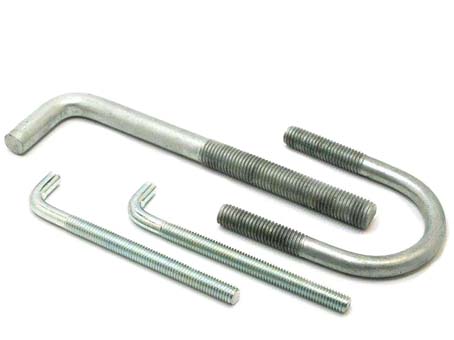
The English name of the horse-riding bolt is U-bolt. It is a non-standard piece. Its shape is U-shaped. It is also called a U-bolt. Both ends are threaded and can be combined with a nut. It is mainly used to fix tubular products such as water pipes or sheet products such as automobile leaf springs. Because its fixed object is the same as a person riding on a horse, it is called a horse riding bolt. According to the thread length is divided into two types of full thread and non-full thread.
According to the type of thread, it can be divided into two types: coarse teeth and fine teeth, and the coarse teeth are not displayed in the bolt marks. The bolts are classified into 3.6, 4.8, 5.6, 5.8, 8.8, 9.8, 10.9, and 12.9 grades according to performance levels. Among them, grade 8.8 or higher (including grade 8.8) bolts are made of low-carbon alloy steel or medium carbon steel and heat-treated (quenched and tempered), commonly known as high-strength bolts. Grades 8.8 and below (excluding grade 8.8) are commonly referred to as ordinary bolts.
Ordinary bolts can be categorized into three grades: A, B, and C according to the manufacturing accuracy. A and B grades are refined bolts, and C grades are coarse bolts. For steel structural bolts, unless otherwise specified, the general crude C-class bolts. There are differences in the methods of different levels of processing, usually corresponding to the following processing methods:
1. The bolts of bolts of class A and class B are machined by a lathe, with a smooth surface and precise dimensions. The material performance grade is 8.8, and the production and installation are complex, and the price is relatively high.
2. Grade C bolts are made of unprocessed round steel and are not precisely dimensioned. Their material performance grade is 4.6 or 4.8.
The deformation of the shear connection is large, but the installation is convenient and the production cost is low. Used for temporary fixation when tensile connection or installation.
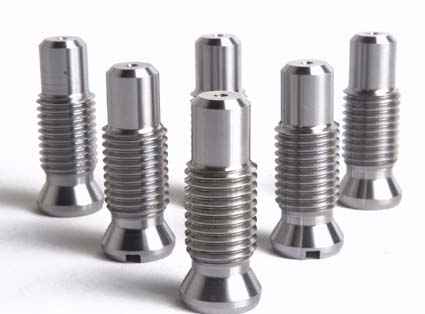 Application
Application
There are many names for bolts. Each person's name may be different. Some people call them screws. Some people call them stud bolts. Some call them fasteners. Although there are so many names, the meanings are the same. They are all bolts. Bolts are a common term for fasteners. Bolts use the physical and mathematical principles of the slanted circular rotation of the object, and friction. Step-by-step fasteners fastening tools.
Bolts are indispensable in everyday life and industrial manufacturing. Bolts are also called industrial rice. Bolt applications include: electronic products, mechanical products, digital products, electrical equipment, mechanical and electrical products. Bolts are also used in ships, vehicles, hydraulic engineering, and even chemical experiments. Anyway, bolts are used in many places. Special precision bolts used in digital products. DVD, micro bolts for cameras, eyeglasses, watches, electronics, etc.; Use general bolts for TVs, electrical products, musical instruments, and furniture; As for engineering, construction, and bridges, large bolts and nuts are used; Transportation equipment, airplanes, trams, and automobiles are used for large and small bolts. Bolts have an important mission in the industry. As long as there is industry on the earth, the function of bolts is always important.
Shape
The countersunk head is generally used where it is required to have a smooth surface with no projections, since the countersunk head is screwed into the part.
The round head can also be screwed into the part.
The square head tightening force can be larger, but the size is large.
In addition, in order to meet the need for locking after installation, there are holes in the head and holes in the shank. These holes can prevent the bolt from loosening when it is subjected to vibration.
Some bolts are not threaded, and the polished rods are made fine, called Fine waist bolt. This kind of bolt is conducive to the connection of variable force.
There are special high-strength bolts on the steel structure, the head will be bigger and the dimensions will change.
In addition there are special uses: T-shaped groove bolts, the most used on the machine fixture, special shape, both sides of the head should be cut off.
Anchor bolts, used to attach the machine to the ground, come in many shapes.
U-bolts, as previously described. Etc.
There are also dedicated studs for welding. One end is threaded and one end is not threaded. It can be welded to the part and the other side can be screwed directly.
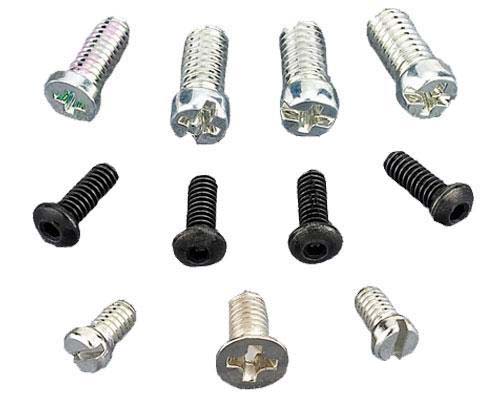
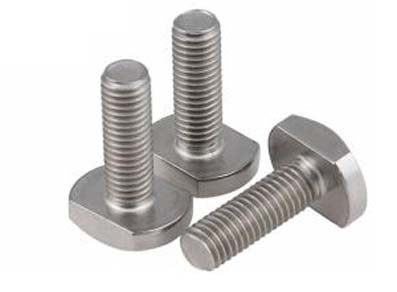
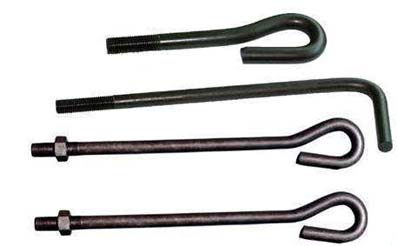
Force way
The bolts are divided into ordinary and reamed bolts. Ordinary main bearing axial force can also carry less demanding lateral forces. The bolts used for reaming holes should be matched with the size of the holes and used when subjected to lateral forces.
Grade meaning
According to the relevant standards, the bolt performance grade is divided into more than 10 grades such as 3.6, 4.6, 4.8, 5.6, 6.8, 8.8, 9.8, 10.9, and 12.9. Among them, bolts of grade 8.8 and above are low-carbon alloy steels or medium-carbon steels and are heat-treated (quenched and tempered), which are commonly referred to as high-strength bolts. The rest are commonly referred to as ordinary bolts. Bolt performance grade labels are composed of two parts, which respectively indicate the nominal tensile strength value and yield ratio of the bolt material.
Bolt detection
Bolt detection is divided into two types: manual and machine. In order to minimize the outflow of defective products, general production company personnel conduct inspections of the products to be packaged or delivered by visual means to exclude defective products (bad including screw damage, mixed materials, rust, etc.).
Another way is automatic detection of the machine, mainly magnetic particle inspection. Magnetic particle flaw detection is the use of the interaction between the leakage magnetic field at the bolt defect and the magnetic powder. (such as cracks, inclusions, mixing, etc.) The difference between permeability and steel permeability, After the magnetization, the discontinuous magnetic field of these materials will undergo a catastrophic change, forming a part of the magnetic flux leakage, and a leakage magnetic field will be generated on the surface of the workpiece, thereby attracting magnetic powder to form a magnetic powder accumulation-magnetic mark. Under proper lighting conditions, the defect's position and shape are revealed, and the observation and interpretation of the accumulation of these magnetic powders have achieved the purpose of rejecting defective products.
Market scenario analysis
Advanced bolts are the basis of high-end machinery manufacturing, and their role can be described as "a two-pronged effort." On the surface, the output of bolts only accounts for a few percent of the machinery industry. In essence, the added value it brings to key components and equipment is much higher. Over the years, after consecutive double-digit growth in China's bolts, the bolt industry experienced a negative growth in 2012, a decrease of about 1.5% year-on-year. The main reason is the lack of market demand, especially after bolts suffered international anti-dumping, export sales showed a downward trend.
The bolt market is fiercely competitive and goes toward brand management.
In recent 10 years, the development speed of China's bolts has attracted worldwide attention, which surprised the developed countries at the same time. And let them find a new big market, and multinational companies enter China. When domestic bolt enterprises suddenly felt that they had been so hard to survive in the market, strong competitors had sprung up everywhere. In today's bolt market in China, some small and medium-sized bolt companies have manufactured large quantities of common standard parts. They have not really brought core competitiveness to enterprises but are subject to changes in the conditions of raw materials and labor costs.
From 4.8 to 6.8 low-strength, or 8.8 to 12.9 high-strength bolts, China's bolt production technology level will be basically close to the world advanced level, Mainly for ordinary standard parts and low, mid-range special, special-shaped bolts, large and cheap. Summarized as the low-grade products flooded with the dominant market, high-grade, high-precision, high-strength bolts still need a small part of the import, the ratio of product import price and bid ratio of about 6 times more.
It can be seen that China’s bolt industry is still a developing industry, “big but not strong”, “fat but not strong”, and has a wide gap with the United States, Japan, South Korea, and the Taiwan region of China. And the lack of technical services to solve the mechanical fastening program, to achieve product, design, manufacturing and management of the digitization of products and manufacturing processes green. It is understood that the development of China's bolts is getting more and more pressure on resources and the environment. An important way to ease resource constraints is to develop green manufacturing. The development of bolts will continue to move forward in the direction of brand management for a certain period of time to promote the development of bolt projects in all directions.
In terms of circulation, it explores various value-added service models to bring value and benefits to customers. From providing a single set of bolts to providing mechanical fastening solutions, customized services, remote monitoring, etc. The proportion of services in the sales of bolt manufacturers will increase gradually.
Corporate restructuring is a trend, and strategic alliances seek development. The current low level of industrial concentration of China's bolt companies seriously restricts the improvement of China's bolt competitiveness. The market opening over the years did not bring core technology. In view of the above situation, restructuring and strategic alliance among enterprises are the major trends. China's bolt industry must conform to this trend and trend, strengthen strategic cooperation among enterprises, and increase the overall competitiveness of China's bolts. China's growth in the field of bolt core technology lacks a breakthrough. At the same time, the survival space of low-end products has been getting smaller and smaller, and foreign companies that have passed localization also have considerable cost advantages. Coupled with the advantages of having a technology brand, it began to move into the market space of the original independent brand.
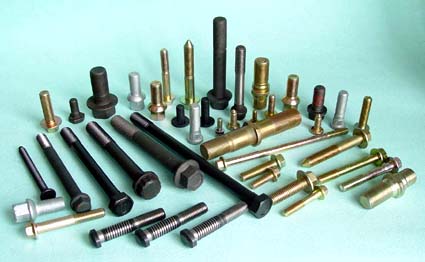
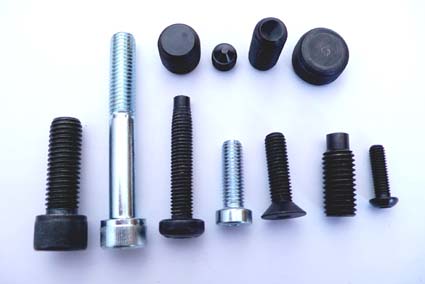
Classification
According to the way of connection force: Used for ordinary and hinged holes.
According to the shape of the head: Hexagonal head, round head, square head, countersunk head and so on. The hexagon head is the most commonly used. The general sinking head is used where the connection is required.

The English name of the horse-riding bolt is U-bolt. It is a non-standard piece. Its shape is U-shaped. It is also called a U-bolt. Both ends are threaded and can be combined with a nut. It is mainly used to fix tubular products such as water pipes or sheet products such as automobile leaf springs. Because its fixed object is the same as a person riding on a horse, it is called a horse riding bolt. According to the thread length is divided into two types of full thread and non-full thread.
According to the type of thread, it can be divided into two types: coarse teeth and fine teeth, and the coarse teeth are not displayed in the bolt marks. The bolts are classified into 3.6, 4.8, 5.6, 5.8, 8.8, 9.8, 10.9, and 12.9 grades according to performance levels. Among them, grade 8.8 or higher (including grade 8.8) bolts are made of low-carbon alloy steel or medium carbon steel and heat-treated (quenched and tempered), commonly known as high-strength bolts. Grades 8.8 and below (excluding grade 8.8) are commonly referred to as ordinary bolts.
Ordinary bolts can be categorized into three grades: A, B, and C according to the manufacturing accuracy. A and B grades are refined bolts, and C grades are coarse bolts. For steel structural bolts, unless otherwise specified, the general crude C-class bolts. There are differences in the methods of different levels of processing, usually corresponding to the following processing methods:
1. The bolts of bolts of class A and class B are machined by a lathe, with a smooth surface and precise dimensions. The material performance grade is 8.8, and the production and installation are complex, and the price is relatively high.
2. Grade C bolts are made of unprocessed round steel and are not precisely dimensioned. Their material performance grade is 4.6 or 4.8.
The deformation of the shear connection is large, but the installation is convenient and the production cost is low. Used for temporary fixation when tensile connection or installation.

There are many names for bolts. Each person's name may be different. Some people call them screws. Some people call them stud bolts. Some call them fasteners. Although there are so many names, the meanings are the same. They are all bolts. Bolts are a common term for fasteners. Bolts use the physical and mathematical principles of the slanted circular rotation of the object, and friction. Step-by-step fasteners fastening tools.
Bolts are indispensable in everyday life and industrial manufacturing. Bolts are also called industrial rice. Bolt applications include: electronic products, mechanical products, digital products, electrical equipment, mechanical and electrical products. Bolts are also used in ships, vehicles, hydraulic engineering, and even chemical experiments. Anyway, bolts are used in many places. Special precision bolts used in digital products. DVD, micro bolts for cameras, eyeglasses, watches, electronics, etc.; Use general bolts for TVs, electrical products, musical instruments, and furniture; As for engineering, construction, and bridges, large bolts and nuts are used; Transportation equipment, airplanes, trams, and automobiles are used for large and small bolts. Bolts have an important mission in the industry. As long as there is industry on the earth, the function of bolts is always important.
Shape
The countersunk head is generally used where it is required to have a smooth surface with no projections, since the countersunk head is screwed into the part.
The round head can also be screwed into the part.
The square head tightening force can be larger, but the size is large.
In addition, in order to meet the need for locking after installation, there are holes in the head and holes in the shank. These holes can prevent the bolt from loosening when it is subjected to vibration.
Some bolts are not threaded, and the polished rods are made fine, called Fine waist bolt. This kind of bolt is conducive to the connection of variable force.
There are special high-strength bolts on the steel structure, the head will be bigger and the dimensions will change.
In addition there are special uses: T-shaped groove bolts, the most used on the machine fixture, special shape, both sides of the head should be cut off.
Anchor bolts, used to attach the machine to the ground, come in many shapes.
U-bolts, as previously described. Etc.
There are also dedicated studs for welding. One end is threaded and one end is not threaded. It can be welded to the part and the other side can be screwed directly.



Force way
The bolts are divided into ordinary and reamed bolts. Ordinary main bearing axial force can also carry less demanding lateral forces. The bolts used for reaming holes should be matched with the size of the holes and used when subjected to lateral forces.
Grade meaning
According to the relevant standards, the bolt performance grade is divided into more than 10 grades such as 3.6, 4.6, 4.8, 5.6, 6.8, 8.8, 9.8, 10.9, and 12.9. Among them, bolts of grade 8.8 and above are low-carbon alloy steels or medium-carbon steels and are heat-treated (quenched and tempered), which are commonly referred to as high-strength bolts. The rest are commonly referred to as ordinary bolts. Bolt performance grade labels are composed of two parts, which respectively indicate the nominal tensile strength value and yield ratio of the bolt material.
Bolt detection
Bolt detection is divided into two types: manual and machine. In order to minimize the outflow of defective products, general production company personnel conduct inspections of the products to be packaged or delivered by visual means to exclude defective products (bad including screw damage, mixed materials, rust, etc.).
Another way is automatic detection of the machine, mainly magnetic particle inspection. Magnetic particle flaw detection is the use of the interaction between the leakage magnetic field at the bolt defect and the magnetic powder. (such as cracks, inclusions, mixing, etc.) The difference between permeability and steel permeability, After the magnetization, the discontinuous magnetic field of these materials will undergo a catastrophic change, forming a part of the magnetic flux leakage, and a leakage magnetic field will be generated on the surface of the workpiece, thereby attracting magnetic powder to form a magnetic powder accumulation-magnetic mark. Under proper lighting conditions, the defect's position and shape are revealed, and the observation and interpretation of the accumulation of these magnetic powders have achieved the purpose of rejecting defective products.
Market scenario analysis
Advanced bolts are the basis of high-end machinery manufacturing, and their role can be described as "a two-pronged effort." On the surface, the output of bolts only accounts for a few percent of the machinery industry. In essence, the added value it brings to key components and equipment is much higher. Over the years, after consecutive double-digit growth in China's bolts, the bolt industry experienced a negative growth in 2012, a decrease of about 1.5% year-on-year. The main reason is the lack of market demand, especially after bolts suffered international anti-dumping, export sales showed a downward trend.
The bolt market is fiercely competitive and goes toward brand management.
In recent 10 years, the development speed of China's bolts has attracted worldwide attention, which surprised the developed countries at the same time. And let them find a new big market, and multinational companies enter China. When domestic bolt enterprises suddenly felt that they had been so hard to survive in the market, strong competitors had sprung up everywhere. In today's bolt market in China, some small and medium-sized bolt companies have manufactured large quantities of common standard parts. They have not really brought core competitiveness to enterprises but are subject to changes in the conditions of raw materials and labor costs.
From 4.8 to 6.8 low-strength, or 8.8 to 12.9 high-strength bolts, China's bolt production technology level will be basically close to the world advanced level, Mainly for ordinary standard parts and low, mid-range special, special-shaped bolts, large and cheap. Summarized as the low-grade products flooded with the dominant market, high-grade, high-precision, high-strength bolts still need a small part of the import, the ratio of product import price and bid ratio of about 6 times more.
It can be seen that China’s bolt industry is still a developing industry, “big but not strong”, “fat but not strong”, and has a wide gap with the United States, Japan, South Korea, and the Taiwan region of China. And the lack of technical services to solve the mechanical fastening program, to achieve product, design, manufacturing and management of the digitization of products and manufacturing processes green. It is understood that the development of China's bolts is getting more and more pressure on resources and the environment. An important way to ease resource constraints is to develop green manufacturing. The development of bolts will continue to move forward in the direction of brand management for a certain period of time to promote the development of bolt projects in all directions.
In terms of circulation, it explores various value-added service models to bring value and benefits to customers. From providing a single set of bolts to providing mechanical fastening solutions, customized services, remote monitoring, etc. The proportion of services in the sales of bolt manufacturers will increase gradually.
Corporate restructuring is a trend, and strategic alliances seek development. The current low level of industrial concentration of China's bolt companies seriously restricts the improvement of China's bolt competitiveness. The market opening over the years did not bring core technology. In view of the above situation, restructuring and strategic alliance among enterprises are the major trends. China's bolt industry must conform to this trend and trend, strengthen strategic cooperation among enterprises, and increase the overall competitiveness of China's bolts. China's growth in the field of bolt core technology lacks a breakthrough. At the same time, the survival space of low-end products has been getting smaller and smaller, and foreign companies that have passed localization also have considerable cost advantages. Coupled with the advantages of having a technology brand, it began to move into the market space of the original independent brand.







